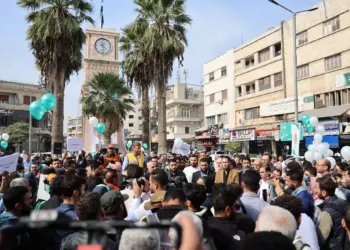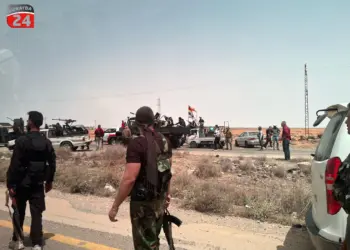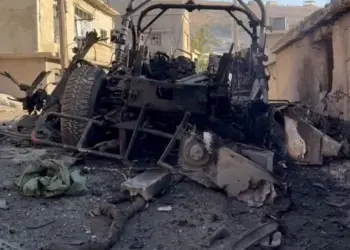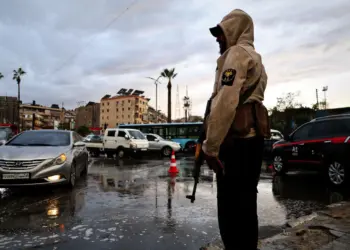While the July ceasefire agreement and subsequent roadmap have maintained a marked decline in large-scale clashes, Suwayda’s truce is still tenuous. Continued sporadic armed incidents—including checkpoint skirmishes, targeted attacks on Druze positions, drone attacks and limited shelling along contested frontlines—undermine confidence in its long-term durability. As long as the specter of Israeli intervention remains, however, interim authorities are highly unlikely to re-embark militarily in Suwayda beyond the current levels of engagement. In practice, clashes are tightly circumscribed geographically and strategically and seem carefully calibrated to avoid a larger collapse of the ceasefire. The frozen frontlines closely mirror the intractable political impasse between the two sides, as many in Suwayda reject the possibility of integrating under the interim government following the massacres of July.
Ceasefire Updates
Since the intense military clashes and massacres that claimed over 1,000 lives across Suwayda in July, a relative but uneasy calm continues to hold in south Syria. Even as sporadic reports of violations by all sides have rippled across border regions and contested areas of control in Suwayda during recent weeks, the military situation remains one, primarily, of continuity. Outbursts of violence, while relatively frequent, remain mostly isolated to a few areas and often center on highly localized conflicts—occasionally even taking the form of intra-sectarian feuds.
Occasional clashes continue between the Druze National Guard and units affiliated with the interim authorities, while Damascus intensified aerial reconnaissance activities over the skies of Suwayda in early October. Yet however frequent these violations, the relatively narrow scope of attacks and lack of strategic objective suggests a calibrated attempt by authorities to pressure local groups without provoking full-scale collapse of the ceasefire agreement. The absence of a clear reconciliation framework suggests that the interim government’s current objective is to exhaust Suwayda’s autonomous institutions through isolation rather than forced reintegration.
The tripartite roadmap announced last month continues to serve, in the view of Damascus, Jordan and the US, as the principal framework for de-escalation and integration discussions in Suwayda. In practice, however, the talks remain essentially frozen with any momentum on reconciliation and implementation stalled for now. Despite high-level pronouncements, there has been little observable progress in recent weeks, as Druze leaders have cast suspicion on the justice and reconciliation initiatives pursued by Damascus in relation to the massacres of July, while claiming that no credible mechanism exists for return of the displaced or compensation of victims. The roadmap has been widely criticized locally in Suwayda as well for its top-down drafting and lack of meaningful consultation with the community.
Political & Humanitarian Developments
Earlier this month, Sheikh Hikmat al-Hijri issued a direct appeal to the UN, EU and Arab League, denouncing what he described as the “collective punishment” of Suwayda’s population through siege tactics and arbitrary violence. Al-Hijri also called for international monitoring and recognition of Suwayda’s right to self-determination, which was swiftly denounced by leaders in Damascus as code for an unacceptable demand of autonomy within Syria. The statement, circulated widely across Arabic and English-language outlets, has since become a rallying cry for local opposition networks denouncing the tripartite roadmap, which many view as a foreign imposition forced upon the people of Suwayda. In response, state media simultaneously launched a “Suwayda Is Part of Us” campaign—a clear effort to counteract narratives of autonomy and to reassert regime sovereignty symbolically.
Within Suwayda, tensions between factions aligned with Sheikh al-Hijri and the Supreme Legal Committee and those maintaining quiet ties to Damascus continues to weaken the Druze negotiating position and undermine solidarity among its leadership. Damascus’ appointment of local Druze loyalists to mid-level security positions—particularly in Shahba and Al-Qurayya—is viewed locally as an attempt to fragment communal solidarity and weaken the senior Druze cleric’s political constituency. Additionally, a group of religious figures meeting at the Al-Khatib family council in Shahba released a statement, read by Sheikh Mahmoud Kiwan, blaming the interim administration for July’s violations in Suwayda and denying accusations that the Druze are collaborating with Israel against the Syrian state. The statement’s implicit criticism of Sheikh al-Hijri and alignment with interim government narratives provoked strong condemnation from local residents, most of whom view al-Hijri’s combative posture as justifiable in the wake of the July massacres.
The humanitarian situation in Suwayda has deteriorated sharply as severe flour shortages cripple basic food production across the province. Dozens of bakeries have shuttered in recent weeks due to the lack of wheat and fuel, leaving only a handful of facilities operating under heavy strain. Residents now wait through the night in long queues outside bakeries, hoping to secure limited bread rations by morning. The acute scarcity has driven up prices of the limited staples that remain, deepening public anger and distrust toward interim authorities who have imposed the blockade on the province, steeply curtailing the flow of goods into Suwayda. World Food Programme convoys continued entering via the Al-Matouna crossing twice weekly, but total shipments remain far below required levels. Bread rationing was imposed in mid-October amid flour shortages, and fuel scarcity pushed transport prices to record highs. In addition, an estimated 150,000 people displaced from western Suwayda have sought refuge in Suwayda city with pro-government forces and allied tribal groups maintaining control of their home villages. IDPs’ presence in the provincial capital has overwhelmed the city’s already fragile infrastructure, straining housing, food and medical services there.





